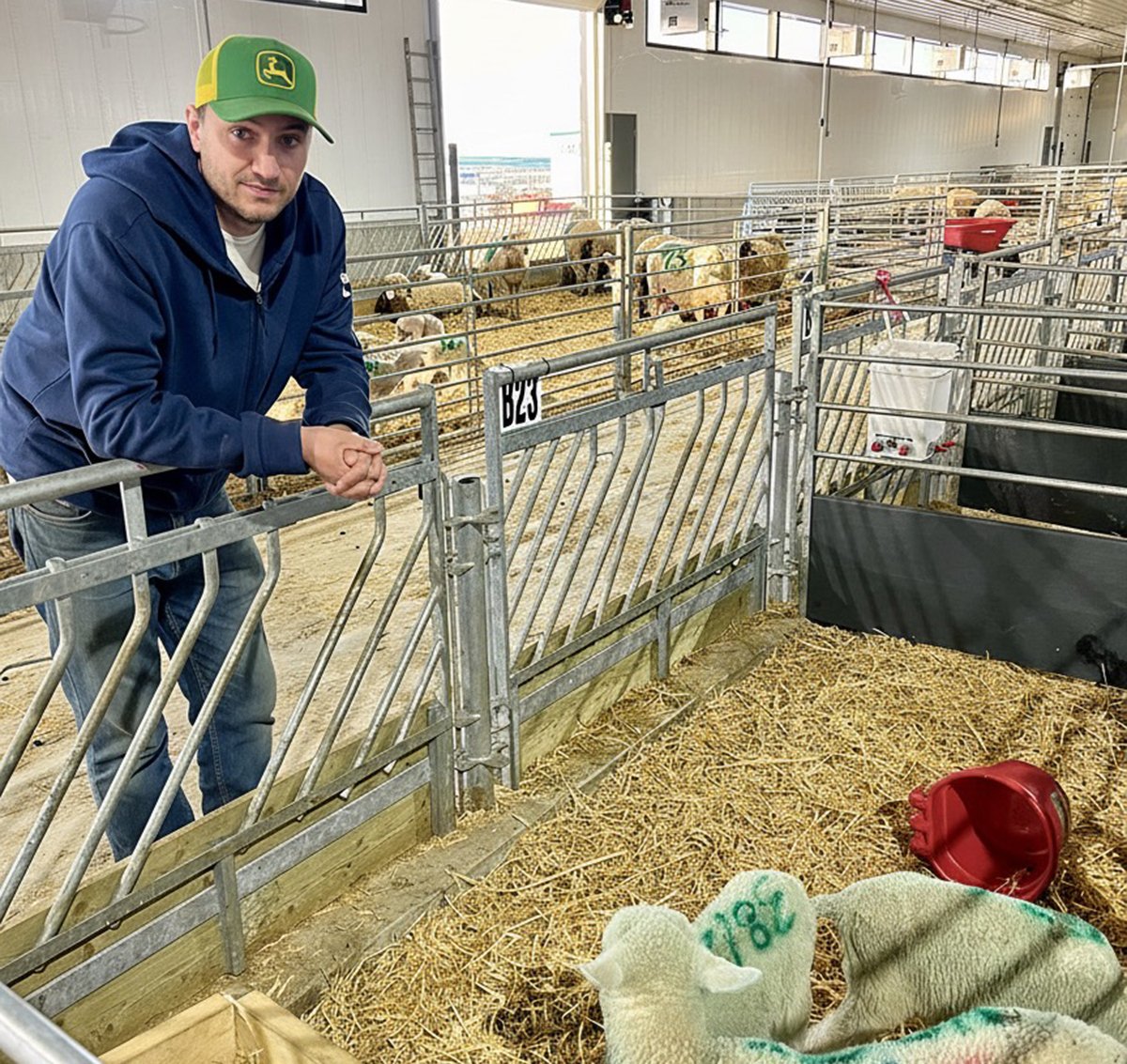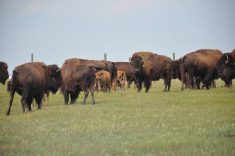Histophilus somnus is a species of bacteria that lives in the nasal passages and reproductive tracts of healthy cattle.
It was first identified in 1960 as the bacteria responsible for infectious thromboembolic meningoencepahalitis (ITEME), a nervous disease that predominantly affects feedlot cattle.
Since that time, many other disease manifestations have been associated with the bacteria, particularly in beef cattle. However, many mysteries still remain.
Like other bacteria that can potentially cause respiratory disease, Histophilus somnus can be found in the upper respiratory tract of many normal cattle. It is also found in the reproductive tract of 50 percent of normal bulls and eight to 10 percent of normal cows.
Read Also

Solar, sheep provide valuable farm diversification
Eric Steeves says raising sheep on forages grown under solar panels provided economic stability and perhaps even saved his family’s fifth generation southern Alberta grain farm.
Studies have shown that a high percentage of cattle have antibodies to Histophilus somnus in their blood, which means they have been exposed to the organism despite not showing clinical disease.
We understand many of the risk factors for the variety of diseases that this bacteria can cause, but it is still not clear why certain groups have outbreaks of disease and others do not.
There is no doubt that many of the stressors that cause respiratory disease, such as weaning stress, transportation and mixing, play a role.
This disease tends to be more common in northern climates and less common in feedlots in the southern United States.
The original disease associated with this bacteria was known as ITEME, a nervous system form of the disease that primarily affected weaned cattle. Cattle might be found dead with no previous signs or they may be found down and unable to stand.
The disease was originally called sleeper syndrome because the affected animal’s eyes were often partially closed and severe depression made it appear sleepy.
The disease is caused when bacteria enter the blood stream and make their way to the brain. The bacteria damage or obstruct the blood vessels, resulting in a syndrome similar to a stroke.
The two most common diseases currently associated with Histophilus somnus in weaned calves are myocarditis, an infection of the heart muscle, and pleuritis, an infection of the external lining of the lungs.
Calves affected with these conditions often die suddenly without any previous illness being recorded or they may have been previously treated for respiratory disease.
The deaths often occur after the initial round of respiratory diseases, and mortalities tend to cluster six to eight weeks after cattle arrive in the feedlot.
Cattle affected with myocarditis may show signs of a fever and depression. They may also show signs of heart failure, which might include mouth breathing, exercise intolerance and accumulation of fluid in the brisket region.
They may collapse and die if forced to move.
Similar to the neurological form, the bacteria damage the heart’s blood vessels and result in a syndrome similar to a heart attack or myocardial infarction.
The pleuritis form results in a severe infection on the surface of the lungs that causes the lungs to collapse. Many affected animals are not identified until they are suddenly found dead.
Both conditions are common causes of mortality in weaned calves in Canadian feedlots and are commonly diagnosed by veterinarians post-mortem.
As well, Histophilus somnus has been associated with many other disease syndromes. It is certainly part of the respiratory disease complex and is one of the bacteria that can cause pneumonia in younger baby calves and weaned calves.
It often appears as part of a mixed infection of bacteria and viruses and is difficult to identify distinctly without doing bacterial cultures.
Histophilus somnus has also been associated with inner ear infections in weaned calves, which shows up as droopy ears and discharge from the ears and is often associated with respiratory disease.
It is also a potential cause of infectious arthritis in feedlot calves and has been associated with reproductive disease in cows.
How one bacteria can cause all of these different syndromes is still a mystery. It may be that different strains of the bacteria tend to manifest disease in different ways.
Commercial vaccines are available for Histophilus somnus and many producers and veterinarians use them as part of their herd health program, especially in high-risk feeder calves.
Clinical trial evidence shows that these vaccines are capable of providing some protection, but they are clearly not the whole answer to preventing this complex of diseases.
Producers who suspect that they may have diseases caused by Histophilus somnus in their cattle should consult with their veterinarian and have post-mortems performed if necessary.
Vaccinations and feed medication are two potential strategies for dealing with this c omplex disease process.
John Campbell is head of Large Animal Clinical Sciences at the University of Saskatchewan’s Western College of Veterinary Medicine.














